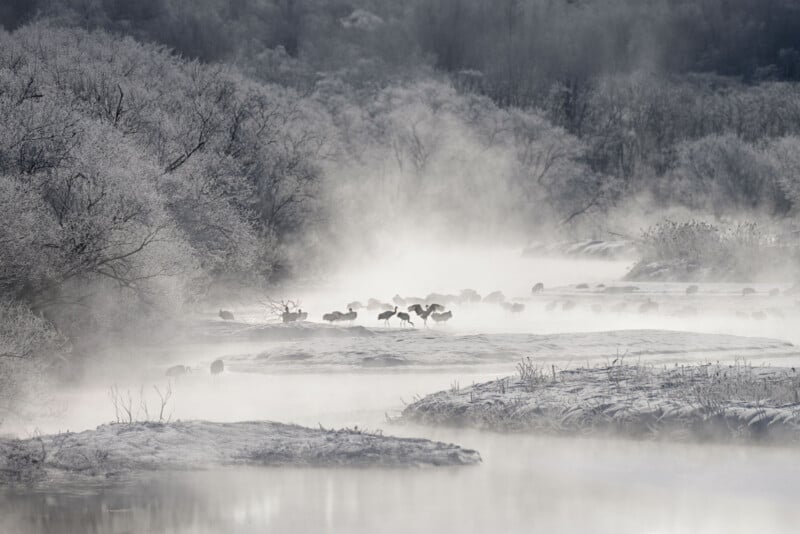Photographer Travels Thousands of Miles to Capture Japan’s Sacred Bird

A photographer traveled thousands of miles from the U.S. so he could capture ethereal photos of Japan’s sacred bird, the red-crowned crane, that are now on display in New York City.
The beautiful creatures, one of the largest and most endangered birds in the world, are famous for bringing good luck and have been immortalized in sumi-e ink paintings. “They capture a blend of minimalism and grace, deep philosophy and symbolism,” Alex Yazlovsky tells PetaPixel.
Yazlovsky flew to Tokyo before getting on another plane to Sapporo, Hokkaido. Then he faced a daunting drive through a severe snowstorm before getting to his destination. However, the trip was well worth it as the next morning clear skies had returned and a breathtaking view unfolded before the photographer.
“Against the serene, snowy landscapes of Hokkaido, red-crowned cranes performed a breathtaking winter ballet,” Yazlovsky describes. “Japanese cranes with their white feathers and red crowns, are symbols of longevity, fidelity, and good fortune in Japanese culture. Photographing these graceful dancers not only celebrates their beauty but also supports vital conservation efforts, raising awareness for this endangered species.”
Over the next month, Yazlovsky visited crane sanctuaries and conservation areas. He used two Sony Alpha 1s with Sony FE 600mm f/4 and Sony FE 200-600mm f/5.6-6.3 lenses. “I was shooting in compressed RAW format using Sony TOUGH 160GB CFexpress Type A memory cards — two cards in each camera, with about 2,200 images per card. So I had around 8,800 images before I needed to change cards.”
Yazlovsky shot thousands of photos every time he went out, filling up the cards daily before spending a few hours each night selecting the images he wanted to keep.
“In Japanese culture, the crane, or Tsuru, is considered a mystical creature believed to live for 1,000 years. Because of this, it has become a powerful symbol of longevity, good fortune, and peace,” says Yazlovsky. “One of the most well-known traditions involves folding 1,000 paper cranes, an act believed to grant a wish, bring healing, or offer protection. People traditionally fold 1,000 cranes to wish for someone’s recovery from illness, to pray for peace, or to bring good luck to weddings and births.”
Yazlovsky says he used the traditional Japanese art of sumi-e, which is a form of ink wash painting, as inspiration for his project.
“Sumi-e paintings are often monochromatic, using only black ink on white or off-white paper, and are characterized by their simplicity and minimalism. Sumi-e images often depict landscapes, flowers, birds, and other natural themes, meant to evoke a sense of tranquility and harmony with nature,” he says.
“Sumi-e brushstrokes vary in pressure and direction to create different effects. The strokes are often applied quickly and with minimal correction to capture the spontaneity and freshness of the moment, very much like photography.”
Alex Yazlovsky’s Crowned Dance is on show now at LUX Gallery in New York City until June 30.